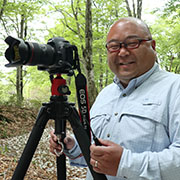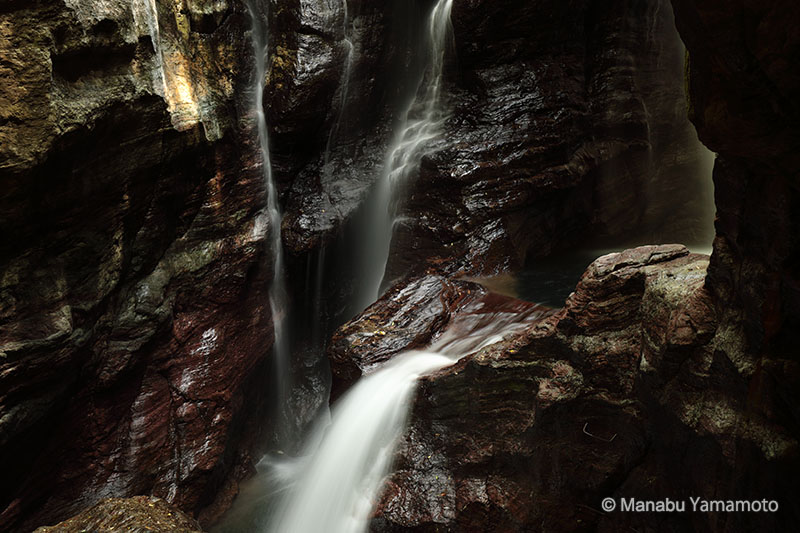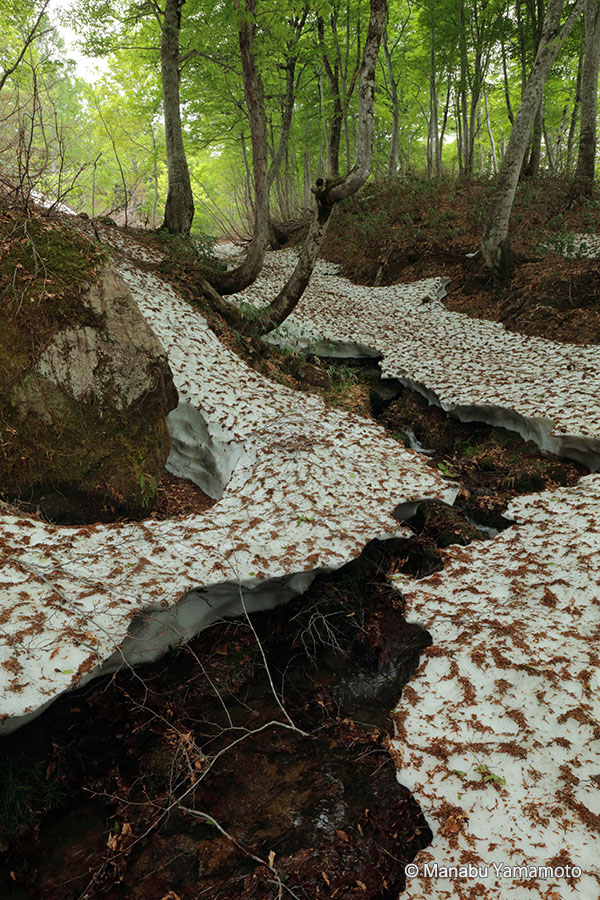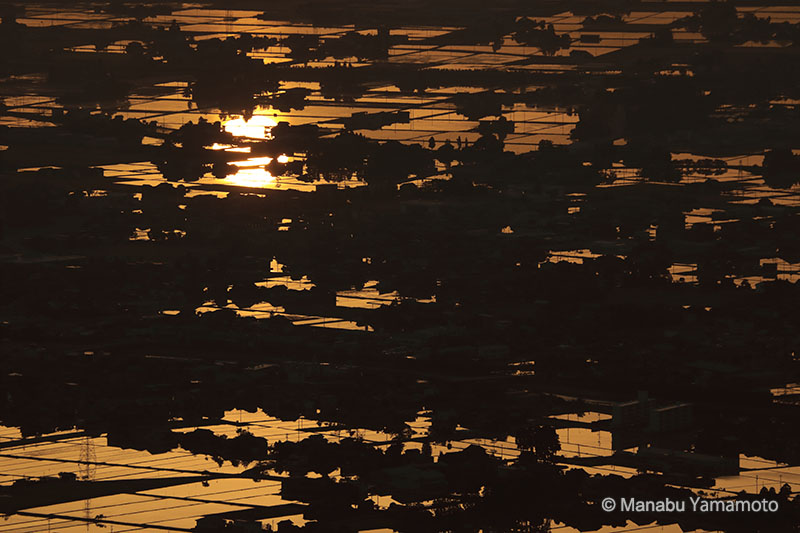Manabu Yamamoto | Markins Ball Head
Theme
"Japanesque" Scenery with a Japanese "emotion"
Photographer
Manabu Yamamoto
Date
April-May 2018
Location
Yoshinoyama(Nara), Nakatsu Valley(Kochi), Gassan (Yamagata), Tonami Plain (Toyama)
Device
Markins
Canon
EOS 5D Mark Ⅳ
EOS 5DsR
EF16-35mm F4L IS USM
EF24-105mm F4L IS II USM
EF70-200mm F2.8L IS II USM
EOS 5DsR
EF16-35mm F4L IS USM
EF24-105mm F4L IS II USM
EF70-200mm F2.8L IS II USM
Velbon
Geo Carmagne E730 / E635
Review

Manabu Yamamoto
Born in Takarazuka City, Hyogo Prefecture in 1975. Currently resides in Takarazuka City, Hyogo Prefecture.
Graduated from the Department of Photography, Faculty of Arts, Osaka University of Arts. After graduation, worked in the laboratory of the same department at Osaka University of Arts before going freelance. Studied under photographer Seizo Takada while still a student. Currently teaches at many photography schools and clubs, including Canon EOS Academy, while continuing to produce works.
Graduated from the Department of Photography, Faculty of Arts, Osaka University of Arts. After graduation, worked in the laboratory of the same department at Osaka University of Arts before going freelance. Studied under photographer Seizo Takada while still a student. Currently teaches at many photography schools and clubs, including Canon EOS Academy, while continuing to produce works.
Member of Japan Professional Photographers Society (JPS)
Full member of Japan Travel Photographers Association
- Photo Collection -
2017
"Japanesque" Landscape Photography Publishing
- Photo Exhibitions -
2008
"Thurs ~ A Place for Each" Fujifilm Photo Salon Tokyo, Nagoya, Osaka, Fukuoka
2017
"Japanesque" Canon Gallery Ginza, Osaka, Fukuoka
2018
"Japanesque" Gallery IWAO (Oita City, Oita)
"Japanesque" Gallery Okita (Kanonji City, Kagawa/October)
And many other group exhibitions
I started using ball heads because of my mentor, photographer Seizo Takada, and I've been using them exclusively to this day. However, every two or three years the smoothness and stopping power deteriorated, and no matter how much I maintained them, I kept buying new ones.
Just when I had given up, thinking it couldn't be helped, I ended up going on location with photographer Toshitaka Nakanishi, who uses Markins. When I asked Nakanishi, he told me that like me, he used to buy a new one every two or three years, but Markins is "a whole different beast!" from any ball head I've used before.
When I tried it out, it moved smoothly and stopped perfectly! And there's something called a limit dial that limits how much the knob is loosened. I was able to use it with a feeling I'd never had before, and it was so pleasant that I was able to concentrate on shooting.
The head in question is the Q10i series, and its catalog load capacity is an astounding 45kg!
The texture is very good when you actually hold it in your hand, but it is a size smaller than the head I had used up until then, which bothered me. So I asked photographer Hirokazu Nagane if there were any problems with the load capacity, and he replied, "No problem at all!", so I decided to buy the Markins.
Just when I had given up, thinking it couldn't be helped, I ended up going on location with photographer Toshitaka Nakanishi, who uses Markins. When I asked Nakanishi, he told me that like me, he used to buy a new one every two or three years, but Markins is "a whole different beast!" from any ball head I've used before.
When I tried it out, it moved smoothly and stopped perfectly! And there's something called a limit dial that limits how much the knob is loosened. I was able to use it with a feeling I'd never had before, and it was so pleasant that I was able to concentrate on shooting.
The head in question is the Q10i series, and its catalog load capacity is an astounding 45kg!
The texture is very good when you actually hold it in your hand, but it is a size smaller than the head I had used up until then, which bothered me. So I asked photographer Hirokazu Nagane if there were any problems with the load capacity, and he replied, "No problem at all!", so I decided to buy the Markins.

When I tried using the Q10i-RD ballhead I received with my own equipment, I found that even with a heavy lens such as a 300mm F2.8, the subtle angle could be fixed firmly by simply tightening the main knob. It was an outstanding sense of stability that I had never experienced before, and it worked well with the tripod I was using and there was no wobbling.
I shoot a lot and use it hard, so I will continue to check the durability, but I have never heard any concerns from those around me. If I were to be greedy, I would say that since there is only one U-shaped groove for deeply tilting the head neck, there are times when I have to rotate it around to adjust the position, and I would be happy if this point was improved.
Also, this was my first time using an L-plate, and it is really convenient to be able to shoot vertically with such ease! I have used various quick shoes, but the Markins is simple and compact, and once you get used to the quick shoe knob, you can instantly release it with one twist, making it easy to switch between vertical and horizontal.
When changing the composition with friction on the ball, the plate is naturally subjected to more load than necessary, but even in such cases, the L-plate dedicated to the model did not shift, but in the case of a general-purpose type, the screw and anti-slip alone could not withstand the load and the plate sometimes shifted. Therefore, when changing the composition, it is important to loosen the panning knob and ball fixing knob once and then move it, or to grab the L-plate together with the camera and move it. If you have had the same experience with a general-purpose type or are considering purchasing one, please use this as a reference.
Finally, these days I see more people buying traveler-type tripods than heavy tripods. Many people also use the ball head that comes with the tripod, but every time I see someone shooting with a lens like 70-200mm attached to such a tripod set, I get worried. This is because the equipment seems a little unreliable for holding the camera lens firmly and taking blur-free shots. I would like people like that to try the stable Markins.
I shoot a lot and use it hard, so I will continue to check the durability, but I have never heard any concerns from those around me. If I were to be greedy, I would say that since there is only one U-shaped groove for deeply tilting the head neck, there are times when I have to rotate it around to adjust the position, and I would be happy if this point was improved.
Also, this was my first time using an L-plate, and it is really convenient to be able to shoot vertically with such ease! I have used various quick shoes, but the Markins is simple and compact, and once you get used to the quick shoe knob, you can instantly release it with one twist, making it easy to switch between vertical and horizontal.
When changing the composition with friction on the ball, the plate is naturally subjected to more load than necessary, but even in such cases, the L-plate dedicated to the model did not shift, but in the case of a general-purpose type, the screw and anti-slip alone could not withstand the load and the plate sometimes shifted. Therefore, when changing the composition, it is important to loosen the panning knob and ball fixing knob once and then move it, or to grab the L-plate together with the camera and move it. If you have had the same experience with a general-purpose type or are considering purchasing one, please use this as a reference.
Finally, these days I see more people buying traveler-type tripods than heavy tripods. Many people also use the ball head that comes with the tripod, but every time I see someone shooting with a lens like 70-200mm attached to such a tripod set, I get worried. This is because the equipment seems a little unreliable for holding the camera lens firmly and taking blur-free shots. I would like people like that to try the stable Markins.

■ Evening haze
Canon EOS 5D Mark Ⅳ / EF24-105mm F4L IS II USMF16 1/60 s -0.3EV ISO400

■ Flow of underground
Canon EOS 5D Mark Ⅳ / EF16-35mm F4L IS USMF7.1 2 s -1EV ISO100

■ Late awakening
Canon EOS 5DsR / EF16-35mm F4L IS USMF16 1/13 s ISO400

■ Warm rice fields
Canon EOS 5D Mark Ⅳ / EF70-200mm F2.8L IS II USM + EXTENDER EF2×IIIF11 1/800 s ISO400







